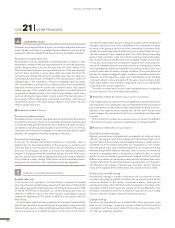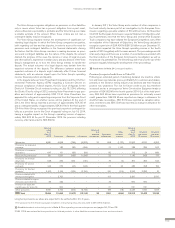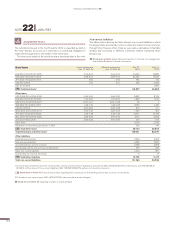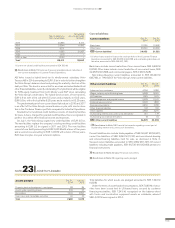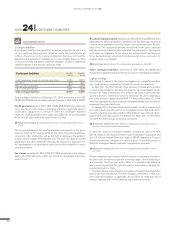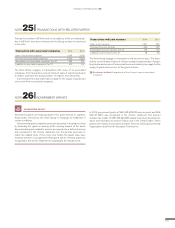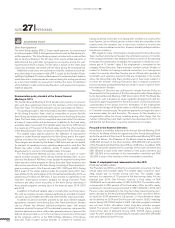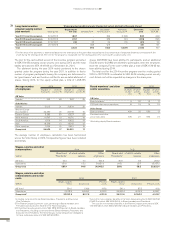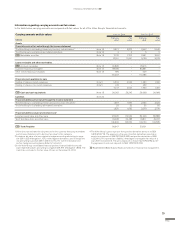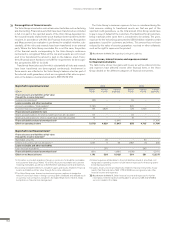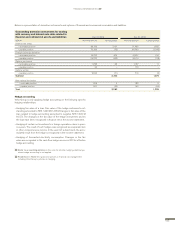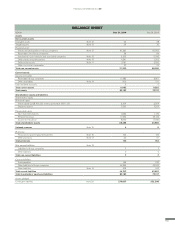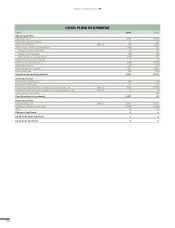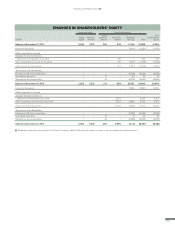Volvo 2014 Annual Report Download - page 166
Download and view the complete annual report
Please find page 166 of the 2014 Volvo annual report below. You can navigate through the pages in the report by either clicking on the pages listed below, or by using the keyword search tool below to find specific information within the annual report.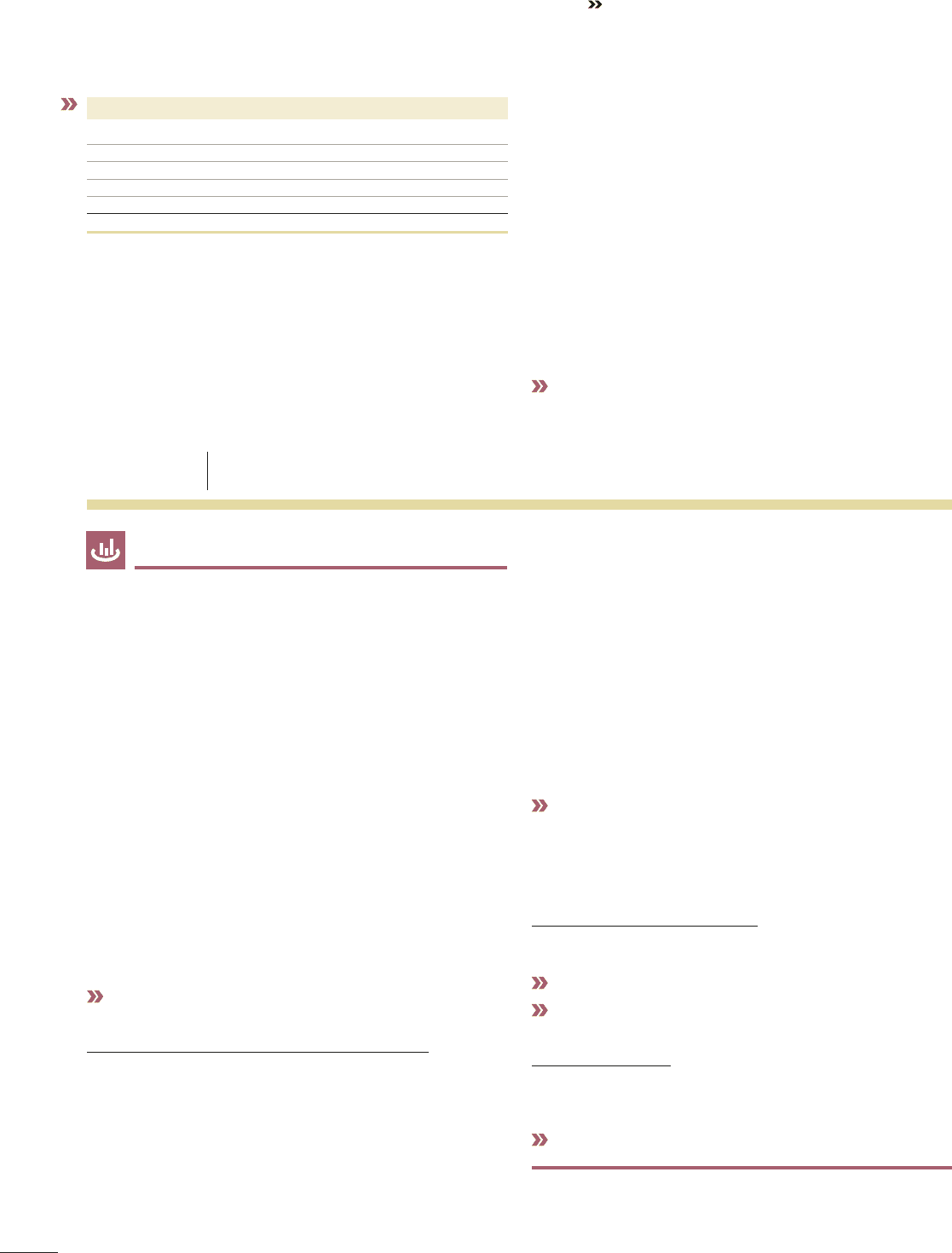
162
Purchases and sales of fi nancial assets and liabilities are recognized on
the transaction date. Transaction expenses are included in the asset’s fair
value, except in cases in which the change in value is recognized in the
income statement. The transaction costs that arise in conjunction with the
assumption of fi nancial liabilities are amortized over the term of the loan
as a fi nancial cost.
A fi nancial asset is derecognized in the balance sheet when all signifi -
cant risks and benefi ts linked to the asset have been transferred to a third
party.
The fair value of assets is determined based on valid market prices,
when available. If market prices are unavailable, the fair value is deter-
mined for each asset using various measurement techniques.
Financial instruments are classifi ed based on the degree that market
values have been utilized when measuring fair value. All fi nancial instru-
ments measured at fair value held by Volvo Group are classifi ed as level 2
with the exception of shares and participations, which are classifi ed as
level 1 for listed instruments and level 3 for not listed instruments. The
valuation of level 2 instruments is based on market conditions using
quoted market data existing at each balance sheet date. The basis for the
interest is the zero-coupon-curve in each currency which is used to calcu-
late the present value of all the estimated future cash fl ows. The fair value
of forward exchange contracts is discounted to balance sheet date based
on the forward rates for each currency as per balance sheet date.
Read more in Note 5 about valuation policy for other shares and
participations.
Financial assets at fair value through the income statement
All of the Volvo Group’s fi nancial assets that are recognized at fair value
through the income statement are classifi ed as held for trading. As pre-
sented in the table on next page, these instruments are derivatives, used
for hedging interest, currency and raw material prices, and marketable
securities (further presented in note 18).
Derivatives used for hedging interest rate exposure in the Customer
Finance portfolio as well as for the fi nancing of activities in Industrial
Operations are included in this category. Unrealized gains and losses
from fl uctuations in the fair values of the fi nancial instruments are recog-
nized in Other fi nancial income and expense. The Volvo Group intends to
hold these derivatives to maturity, which is why, over time, the market val-
uation will be offset as a consequence of the interest-rate fi xing on bor-
rowing and lending for the Customer Finance Operations, and thus not
affect operating income or cash fl ow.
Financial instruments used for hedging currency risks arising from
future fi rm commercial cash fl ows are also recognized under this cate-
gory. Unrealized and realized gains and losses are recognized in Other
fi nancial income and expenses to be able to net all internal fl ows before
entering into external derivatives, except for gains and losses from deriv-
atives hedging currency risks of future cash fl ows for specifi c orders
which are recognized in operating income.
Read more in Note 9 about the effect in the income statement from
revaluation of the derivatives.
The Volvo Group only applies hedge accounting on a few specifi c hedging
relationships. Refer to section on Hedge accounting in this note for the
Volvo Group’s policy choice on hedge accounting.
Loan receivables and other receivables
Included in this category are accounts receivable, customer-fi nance receiv-
ables and other interest bearing receivables.
Read more in Note 15 for accounting policy on customer-fi nance receivables.
Read more in Note 16 for accounting policy on accounts receivable and
other interest-bearing receivables.
Assets available for sale
This category includes assets available for sale and assets that have not
been classifi ed in any of the other category. For the Volvo Group this cat-
egory contains holding of shares in listed and non-listed companies.
Read more in Note 5 about other shares and participations.
ACCOUNTING POLICY
NOTE 30 FINANCIAL INSTRUMENTS
Changes in loans, net 2014 2013
New borrowings 180,066 150,320
Amortizations (169,436) (134,834)
Syndications (4,661) (3,604)
Changes in group composition (280) 138
Other 997 935
Changes in loans, net 6,686 12,955
During 2014 external loans in the Volvo Group balance sheet increased
by SEK 13.0 billion (3.5), whereof SEK 9.7 billion (positive 5.4) was related
to currency effects. Syndications was performed in the Customer Finance
Operations to an amount of SEK 8.3 billion (6.6), whereof SEK 3.7 billion
(3.0) had no impact on the cash fl ow. Both the negative currency effect
and the syndications with no impact on the cash fl ow have been adjusted
on changes in loans, net in the cash fl ow.
Realized gains and losses on derivatives used to hedge future cash
fl ows from the acquisition of Dongfeng Commercial Vehicles amounted to
SEK 1.2 billion and is reported in changes in loans, net in the cash fl ow
and included on line Other in the table Changes in loans, net above.
Important increase/decrease in bond loans and other loans
In 2014, the Volvo Group increased its borrowings as a consequence of
higher demands of funding in the Customer Finance Operations. Indus-
trial Operations reduced its borrowings mainly as a consequence of an
improved operating cash fl ow and the divesture of Volvo Rents and com-
mercial real estate.
A hybrid bond was issued in 2014, amounting to EUR 1.5 billion in order
to further strengthen the Group’s balance sheet and prolong the maturity
structure of the debt portfolio. The hybrid is accounted for as a loan with
a maturity of 61.6 years and subordinated to all other fi nancial liabilities
currently outstanding.
Read more in Note 22 Liabilities regarding the hybrid bond.
FINANCIAL INFORMATION 2014


